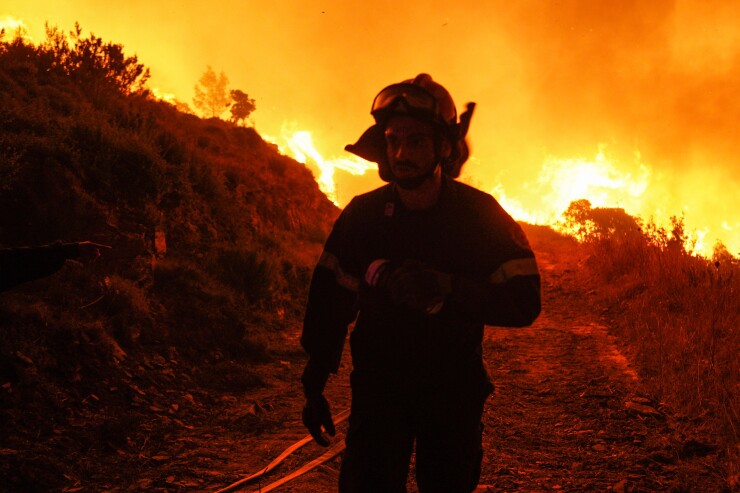(Bloomberg) --Artificial intelligence is improving the accuracy of fire forecasts made by Europe's top intergovernmental weather center.
Traditional fire forecasts are largely based on weather models that predict temperature, humidity, wind speed and precipitation. By contrast, the Probability of Fire model used by the European Centre for Medium-Range Weather Forecasts is powered by AI algorithms that analyze fire patterns, potential fuel sources and human activity.
The AI forecast more accurately predicts high-risk regions and can more closely pinpoint hotspots where fires are likely to ignite, researchers
"It takes a more holistic approach," said Francesca Di Giuseppe, who co-wrote the research and leads a division at the center that evaluates forecasts.
As the planet heats up and weather whiplash spreads, compound weather events — such as heavy rainfall and drought that preceded the deadly wildfires in Southern California earlier this year — are raising risks across the globe. That's increasing the need to accurately forecast extreme weather events as wildfires threaten countries from South Korea to Greece.
Read More:
The biggest AI improvement comes from better data on potential fuel sources, which are hard to observe and account for in weather-based forecasts like the Fire Weather Index, a widely used early warning model originally developed for forest blazes in Canada.
The AI model uses weather information, but also draws from 19 different datasets, including satellite images that can distinguish between living and dead plants, while also identifying population and road density, and proximity to urban areas.
By adding in the more detailed fuel data, the AI models were able to improve forecasts by 30%, the research found. It can also reduce false alarms by avoiding another pitfall of weather-based forecasts: a tendency to overestimate fire risks in extremely hot, dry and sparsely inhabited places, like deserts.
"Either because people are not present, or there is no fuel to burn," Di Giuseppe said.
Researchers tested the AI model by comparing forecasts for wildfires, including the January 2025 blaze that ravaged Southern California. While the weather-based model was able to forecast the low humidity, dry conditions and hurricane-force winds and a broad region of high fire danger, the AI model better predicted specific areas where fires eventually ignited.
Researchers said the AI model better predicts how climate change is altering fire conditions, including the "whiplash" effect of wet periods with booming plant growth followed by hot, dry periods that bake the vegetation into fuel, which played a major role in Southern California. The AI models showed that those anomalies created a "distinct pattern of increased flammability," the researchers said.
The AI fire forecast was developed in 2023, as the center's meteorologists bet that machine learning techniques would eventually beat out conventional methods and deliver crucial weather predictions with greater accuracy and speed. The center released a general AI model in February — the first from a major forecast agency — which is already being used by regional met offices and traders looking for a
Read More:






